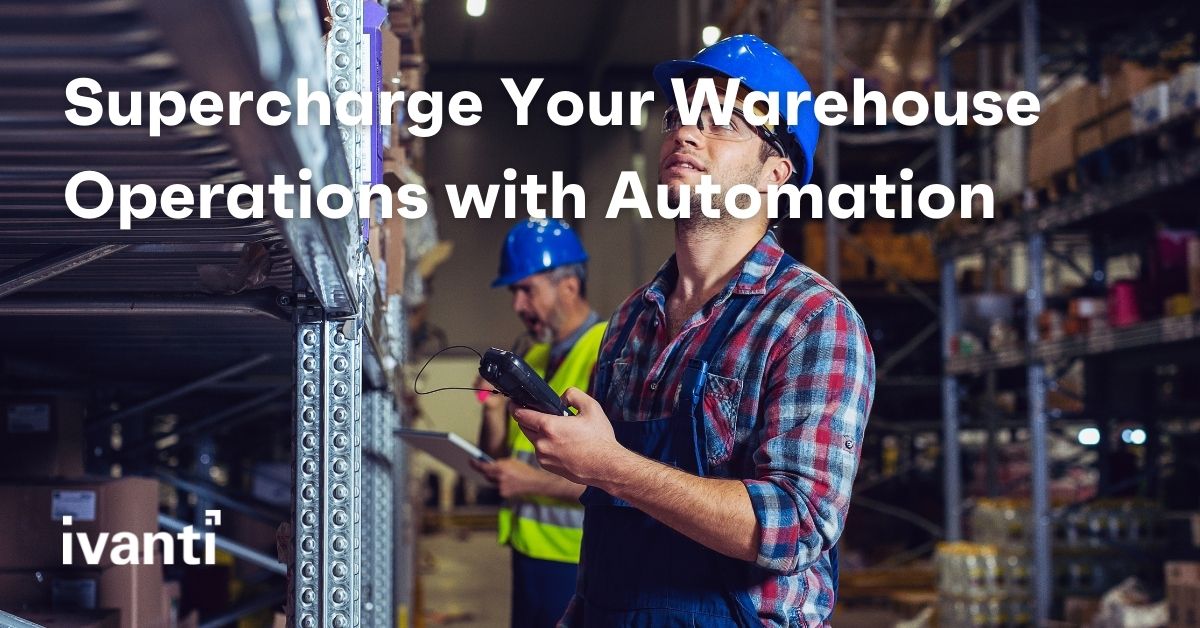Supercharge Your Warehouse Operations with Automation
Automation in warehouses is a top priority for supply chain operators. In the last year, the COVID-19 pandemic increased consumer interest in e-commerce, and logistics companies added seasonal employees for peak seasons. UPS and Amazon each added 100,000 employees to keep up with this demand. And with demand continuing to rise, there’s little time to deal with any disruption to supply chain operations.
According to AI Multiple’s Supply Chain Automation in 2021: In Depth Guide, “Automated technologies have been proven to speed up and streamline processes for warehouse, distribution and logistics organizations, but the majority of companies are still behind the curve in terms of investment and adoption.”
And the same supply chain automation research said, “Sixty-one percent of professionals expect capacity requirements to increase over the next year.”
So, how can warehouses integrate automated processes and keep productivity streamlined?
Supply Chain Warehouse Automation
Automation is making many warehouse processes more efficient by augmenting workers with technology that automates tedious, manual tasks, freeing up task workers to focus on other complex tasks. In fact, 53% of warehouse operators say that warehouse automation is the top technology invested by top companies. (Deloitte)
Warehouse automation comes in many forms, including artificial intelligence (AI), machines and robots that assist workers with processes related to inventory planning, asset tracking, order fulfillment and more. In short, supply chain automation saves a company time and money, while helping warehouse operators improve efficiency, accuracy and productivity. Today’s technology can take warehouse operations to a whole new level.
What Parts of the Warehouse Can Be Automated?
Supply chain automation is the wave of the future. It’s the modern warehouse reimagined. So, what parts of the warehouse can be automated?
Warehouse automation technologies fall into two broad categories — devices that assist the movement of goods and those that improve their handling. When it comes to warehouse operations, you want to identify and automate tasks that are repetitive or time-consuming — tasks that are prone to human error. Doing so will help you streamline tasks, save time and ramp up productivity for more efficient warehouse operations.
This also means integrating existing devices, assets or technologies into a process automation solution with actionable outcomes, without having to invest in expensive WMS changes.
This is where the Ivanti® Velocity platform comes in. It offers much more than just Terminal Emulation (TE). From migration, modernization and voice enablement to device management and beyond, the Ivanti Velocity platform embodies the future-proof technology to help you elevate your warehouse operations quickly and securely.
Here’s a look at the types of warehouse automation achievable with the Ivanti Velocity platform:
Location-Based Input — A number of smart technologies allow devices to be tracked within a building. Things such as Low-energy Bluetooth beacons, indoor GPS and Wi-Fi 6 locationing. This locationing data can be used to drive the workflow for the user based on their location without the need for input.
Imagine a device telling you to go to aisle A15. As you approach the aisle, the instruction updates automatically to guide you to the specific bay. By breaking the task down into location-based tasks, Ivanti simplifies the instructions given to the end user and focuses them on the most important task at the moment.
Camera-Based Auditing — Determining the root cause of an issue after the fact can be really challenging. Through IOT automation, you can add in automated visual records.
Picture a scenario when a picker drops off an order that needs to be loaded on a truck. A smart camera takes a picture automatically and tags it to the order to verify it was stacked correctly and safely.
Preventative Maintenance — Often times things don’t get fixed until they break, which negatively impacts productivity.
Imagine having smart vibration sensors on your conveyors that can detect when the motors aren’t running correctly; or a distance sensor above a stack of labels that re-orders automatically when the stock gets too low.
As a future-proof and scalable technology, Ivanti Velocity is a platform that allows end-to-end supply chain visibility, enabling continuous growth through the orchestration of workflow automation and integration. Designed to grow with the needs of your warehouse, the Ivanti Velocity platform helps you realize the needed gains to achieve optimized, productive and accurate warehouse operations.
Interested in learning more? Reach out to us for a demo today!

